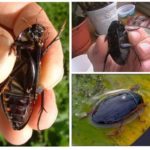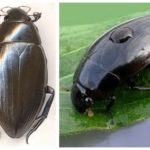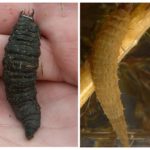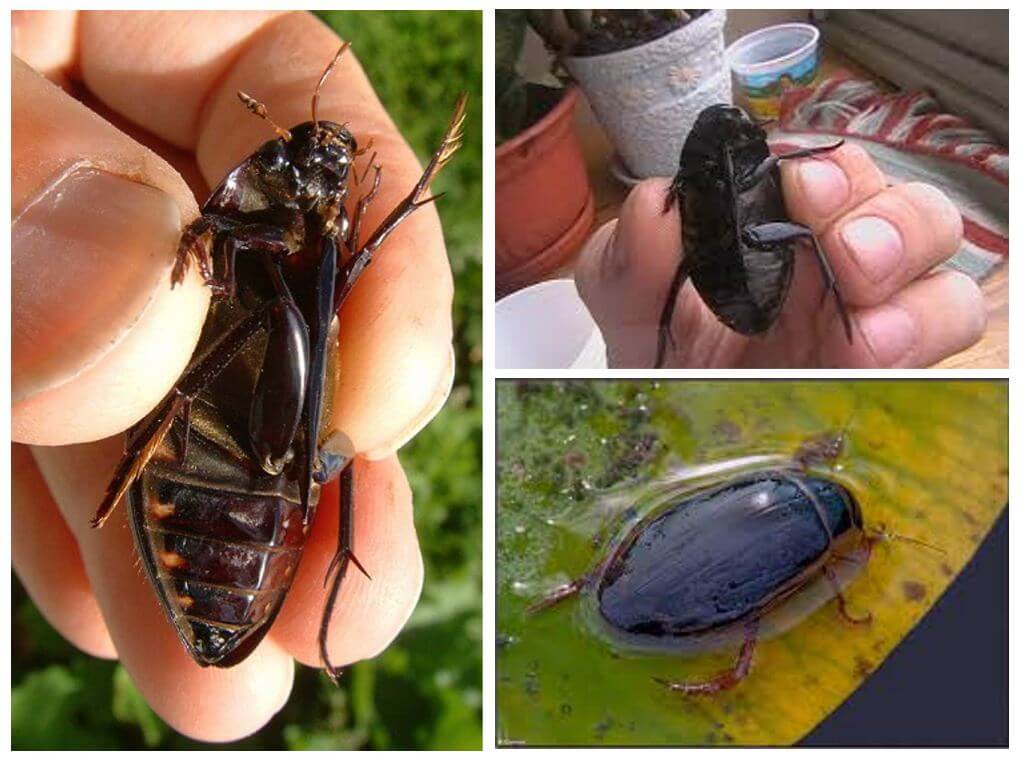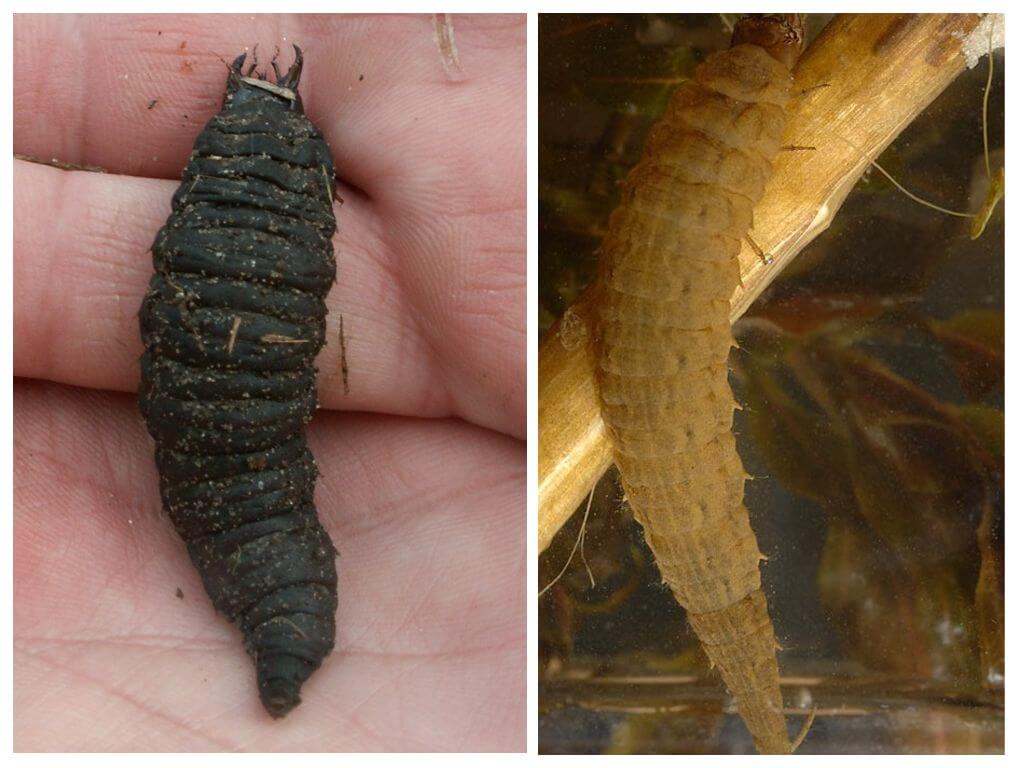Waterborne fringed and water-loving great comparison of two species of beetles
Content
- Pennywort
- Pennywort
- Water larvae larvae
Beetle big water lover is one of the most common representatives of our fauna. It can be found in almost all corners of the world: in the Mediterranean, the Caucasus, in Southern Siberia and in Primorye. Insect can live in India, China, as well as in Europe. A large family of these insects has about two thousand species, each of which has its own color, characteristics and way of life.
Insect features
The water beetle big - the inhabitant of water. Among his relatives, he is one of the largest - the length of the Waterman’s body reaches up to 5 cm. The eye is attracted by the black glossy color of the Waterman. If you compare it with a beetle edged, then apparently they have some similarities. A striking distinctive feature of the latter is a noticeable yellow border, encircling the long body of the insect.
On the massive head of the beetle are large eyes and short club-shaped antennae. On the sides of the abdomen, you can see red spots. On the dorsal side of the body are elytra having thin grooves. Under them 6 pairs of abdominal spiracles are hidden.
The body shape of a large water buff is oblong and convex. If we compare it with the body of a fringed swimmer, it is less streamlined. Therefore, the overweight insect slowly and very reluctantly swims. This also happens because the beetle makes asynchronous movements with its middle and hind legs.
In addition, waterman extremities have triangular extensions, and a swimmer has disc-shaped suckers on them. As a result, his legs are not so cleverly perform the function of oars.That is why the beetle prefers to crawl more in the thickets of plants growing in water. Photos of water lovers are presented below.
Lifestyle
Vodolyub leads mainly nightlife, preferring to fly out on a warm moonlit night. The beetle has many enemies from which it defends itself, producing an unpleasant grinding of sheaths. The water lover can also scare off the enemy in another way, by releasing a gruel of unpleasant odor from the body.
The fish is bordered and water-loving great and differ by habits. A water lover sticks his head out as he ascends, and draws air with his mustache. As a result, oxygen envelops the abdomen from below, forming a kind of bubble. The hunter is picking up the air, rising abdomen up.
The main habitat of a large water enthusiast is a reservoir, a pond or a river, fish beetle bordered can live both in running and in stagnant water. The feeding of a large water lover is algae, rotten parts of aquatic plants, the remains of dead insects and river fish. If you keep these beetles at home in the aquarium, you can feed them with food for aquarium fish, bloodworms, pipemaker, and even lettuce or dandelion leaves.
The fishtail is a predator that attacks all small aquatic inhabitants: snails, tadpoles, insects, crustaceans, fry. The beetle beetle and its larva are the most dangerous enemies of the fish, as they eat not only fry, but also fish spawn.
Breeding
Beetles begin to actively breed with the arrival of spring, after which the female prepares to lay eggs. Cuddling her belly against the sheet, she releases barely noticeable spiderwebs. It is their she uses for weaving a cocoon, which will later lay eggs. The female fills the cocoon with a lid woven from the same threads. She fastens a mast horn on her, which serves as a conductor of air. This design resembles a steady shuttle.
Lifestyles of a large water-loving larvae and a swimmer
After 2-2.5 weeks, the larvae appear on the light, which outwardly differ from the larvae of the fringed swimmer. They are thicker and clumsy. On the big head are powerful mandibles. It is also surprising that they do not leave the cocoon, but continue to live in it until their first molt.
Food for them during this period is the shell of the cocoon and its own skins.After a certain time, the larvae begin to feed on small snails and are even able to eat fish fry. Young offspring prefer to move more through the plants than to swim. By this method, it reaches the surface of the water, so that with the help of spiracles located at the end of the abdomen, they can make air supply.
The larvae of the swimmer and water lover have a different feeding method. Having attacked a snail, the larva of the water-hungry shatters its shell with its powerful mandibles. Then on her prey she regurgitates the digestive fluid, which thins the prey. Then proceeds to absorb the digested delicacy. The larva of the swimmer squirts digestive juice into the inside of its prey, subsequently sucking it from the inside.
The method of protection against enemies in the larvae of the water lover and the swimmer is also different. At the time of danger, the larvae of the swimmer releases its sharp mandibles. The larva of the water-lover takes the cunning, pretending to be half-dead. At the time of danger, she regurgitates black liquid, which is capable of dyeing water, which scares the enemy.
For pupation larvae vodolyub selected on the shore.Adult beetles will appear from the pupae only by the end of the summer, after which they again set off to conquer the water element.
After comparing the two species of beetles, it becomes clear that, living side by side, these aquatic inhabitants are in many ways different. And the difference is not only in what the water lover eats and the swimmer. They have differently adapted to life in the same environment: they have a different way of breathing, developing, and feeding the larvae.

